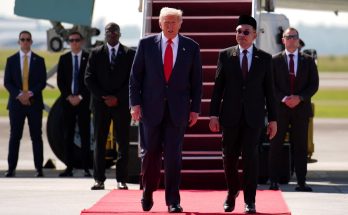Touted as Asia’s premier air show, the Aero India-2013 has kicked off in India’s IT hub Bangalore with a scintillating aerobatic display by India’s Light Combat Aircraft Tejas and the Russian Knights aerobatic display team comprising Su-27 fighter aircrafts. Amid a difficult neighbourhood and a host of security challenges, Defence Minister A.K. Antony set the tone for the show by underlining the pivotal importance of India’s quest for self-reliance in the arena of defence.
“Self reliance in defence area is our focus area,” said Antony in his inaugural address at the biennial event at the Yelahanka Airbase in Bangalore Feb 6. “We want to create a strong defence industrial base in the country,” he stressed.
More than 600 companies are participating in Asia’s biggest aerospace exposition, showcasing cutting-edge technologies in defence armaments, mainly aviation and avionics related software and hardware. With an estimated $100 billions acquisition plan for the Indian armed forces in the next one decade, the international arms majors are vying for a larger chunk of the burgeoning Indian defence pie. In his inaugural address, Antony underlined that India has chalked out a road-map in the form of defence production policy and will be encouraging the country’s public and private sector industries to become proactive partners in achieving the core objective of self-reliance. “There are big opportunities for major international aerospace companies to enter into new alliances and forge partnerships with Indian industry and set up bases in India”, Antony said.
Aero India 2013 will project India’s emergence as a fast-growing and an attractive market, as well as a key outsourcing hub for global aerospace firms, he added. Echoing similar thoughts, banker Naina Lal Kidwai, the president of India’s premier industry lobby FICCI and also the co-host of the air show, hoped that what the IT industry has done to India, the defence industry, too, will have a transformational impact.
India’s defence market promises to be the most rewarding in view of soaring demands of modernization, which are triggered by the ever-increasing security challenges not only from India’s neighborhood, but also the new emerging security environment in the Indian Ocean and the Pacific Sea, including the South China Sea, from where more than 55 percent of India’s export and imports transit. With India’s emergence as Asia’s third largest economy, the need to secure India’s economic interests in the high seas has necessitated the armed forces to be well equipped to deal with any threats to its economic interests.
The 12th and 13th plan, from 2012 to 2022, envisages a gradual upgradation of Indian armed forces to the status of a major military power. The Indian Air Force, too, has a very ambitious modernisation plan, which includes not only the 126 Rafale Medium RangeMulti Role Combat Aircraft, worth $12 billion, over 200 Fifth Generation Fighter Aircraft, being developed jointly with Russia worth US$ 35 billion, the heavy lift helicopter and the attack helicopter. In view of the heavy deployment of ballistic missiles tipped with nuclear weapons in India’s neighborhood, the Indian armed forces also need to be equipped with the anti-missile defence systems.
India’s DRDO is feverishly working on developing the missile defence systems and has already done several tests. But this has not deterred the international manufacturers from Israel, the US and Russia from making all-out efforts to upstage the country’s indigenous efforts. The Israeli aircraft industries are present in the Aero India with their latest Iron-dome anti–missile systems, which has displayed its efficacy during the recent Israel-Palestinian standoff.
Though Russia has been India’s traditional defence supplier, accounting for nearly 70 per cent of India’s military hardware imports, the Israelis, the American and the European companies have descended in hordes to tomtom the latest in their kitty, which has just come out from their most advanced laboratories. Just a few years ago, the American and the European defence companies would have put several conditions on Indian armed forces but they are now offering to jointly manufacture them in India. With the shrinking global demand for defence systems, India seems to be their main hope on which they hope to recover their research and development costs and save thousands of jobs back home. The Aero India-2013 has also provided an opportunity to countries in regions extending from Africa to Central and Southeast Asia to shop for the cutting-edge defence systems.




